Open position C chord and its movable form and variations.
Open position C and its movable form and variations.
Available for Premium Site Access Plans Only


Open Position Photos
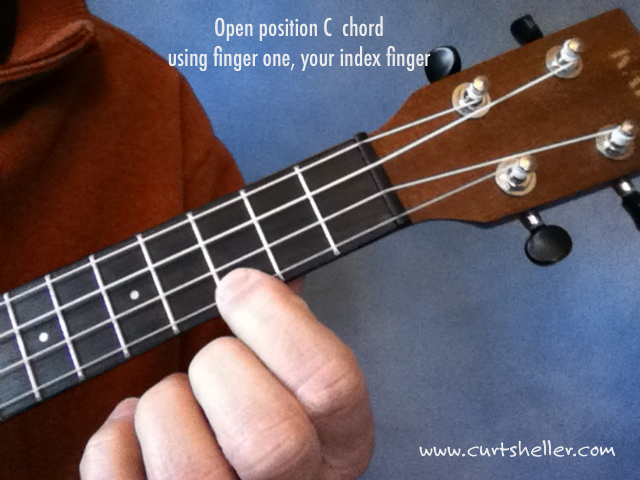
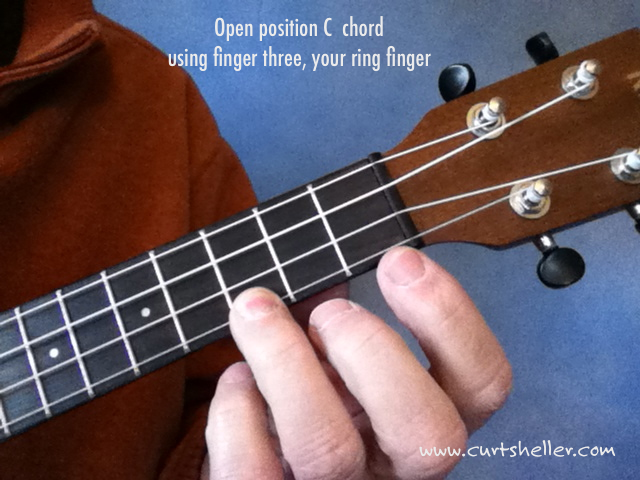

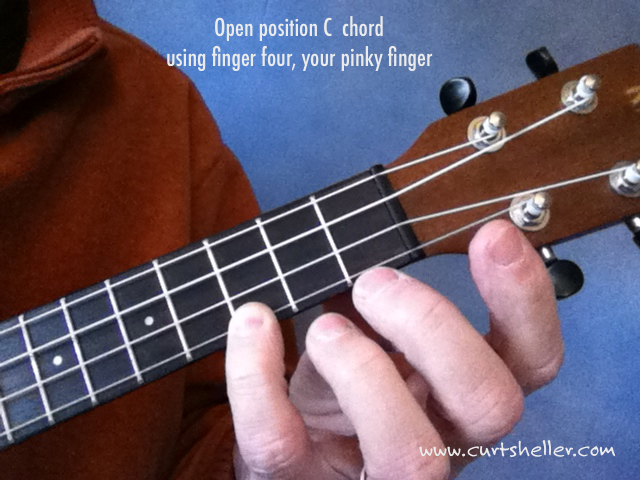
An open position C major chord can be played with any finger. All depends on the context of its use. Typically played with either fingers one and two or two and three.
Checkout the Learn a Chord a Day lessons for Open Position C for all the information you can get from a chord.
Movable Form Photo

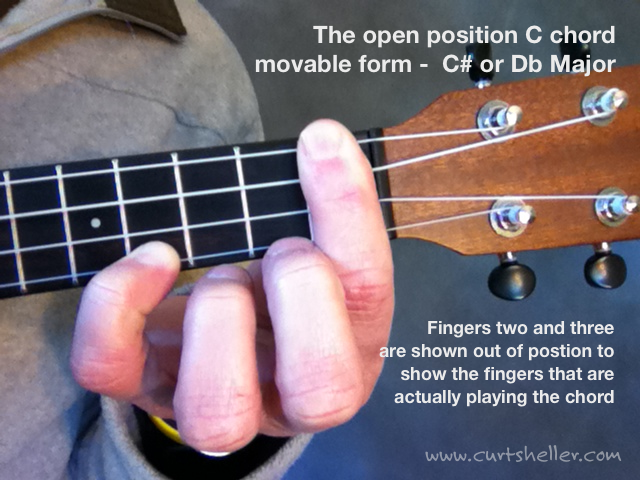


 Use the Root or perceived root of the chord to transpose to different keys.
Use the Root or perceived root of the chord to transpose to different keys.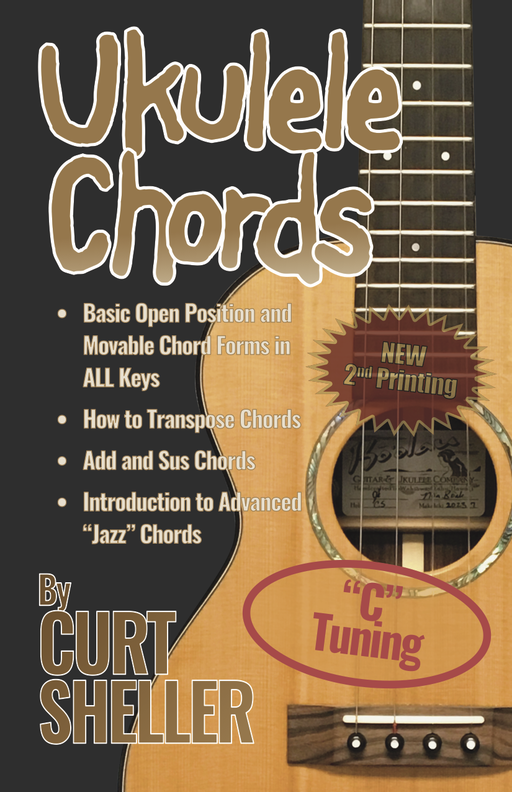 A larger sized transposition chart is available in the Ukulele Chords book. This is the book these expanded chord lessons are based on.
A larger sized transposition chart is available in the Ukulele Chords book. This is the book these expanded chord lessons are based on.Chord Tones – C E G
The chord tones of a C major chord are the 1st, 3rd, and 5th scale degrees of the C Major Scale ( C D E F G A B C' ) .


- 1 – the Root or letter name of C is C
- 3 – the third of C is E
- 5 – the fifth of C is G

There's More to C Than You Know
Tracking the Root(s) of the chord we can derive and create other chords simply by lower the Root of the chord.
Today's C is C E G and order from string four to one (the floor): G C E C — two roots. We can lower the highest Root that is on string one.





Perceived Root
Notice the Root on string one (letter name of the chord) is the only note we moved.

chordthat, at its foundation is not a chord but a DYAD.

7th (pronounced Seventh)
A partial seventh chord can be created by lowering the Root of a major triad two frets.
A seventh chord as a 4-part chord ( 1 3 5 b7 ) and one of the Big Six core chords used to derive other contemporary and jazz chords.
A Seventh chord along with your basic major and minor chords are the msot common chord you will encounter.
NOTE: A Seventh chord is very often referred to as a Dominant Seventh . This is not always accurate as Dominant — is a chord function and not actually part of a chord name, which is a capital letter and chord type information – not it's harmonic function. We don't call a seventh functioning as a I (one) chord in a Blues a Tonic Seventh or the IV (four) chord a Sub-Dominant Seventh chord, etc...
.png)
Related Lessons, Videos, Lesson Series, Songs, Books & Reference Charts, Resources & Assets, Workshops are below.
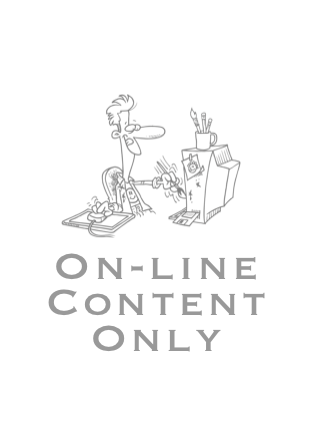
Your first ukulele chord is typically an open position "C Major Chord." It's only one finger and ukulele players love to show new players this, the easiest, usable ukulele chord for new players. Especially someone coming from guitar where an open position C major is three fingers and not that easy as the first chord.

In music, it is important to learn and recognize the key signature for C Major and A Minor. These two keys have corresponding major and natural minor scales, along with basic ukulele chords that can be used with each scale. The key of C Major, also known as the learning key, is particularly easy to memorize and start using.

Finally, learn the names of the notes of the ukulele fingerboard in C tuning .

Learn the six fingering principles to navigating the ukulele fingerboard. Fingering is one of the most universal topics. Book: Six Secrets of the Ukulele Fingering

Harmonic Analysis is the understanding of the functional sequence of chords. It is the process used to analyze the harmonic structure of a progression, song or composition. Book: Harmonic Analysis for Scale Selection and Chord Substitution

Learn to read single note melodies in the first/open position is a lot easier than you might think. Book: Ukulele – Reading Music Series – Primer

An organized collection of daily practice and reference material for the contemporary ukulele player for developing the vocabulary and knowledge necessary for single note playing. Book: Daily Practice Material for the Contemporary Ukulele
Checkout the Books & Reference Charts for additional Handy, Dandy Reference Charts.

Ukulele Fingerboard Chart for C Tuning, Low or High G – G C E A

Ukulele Fingerboard Chart for G Tuning, Low or High A – D G B E

A handy reference chart of all 15 major and relative minor key signatures. US Letter 8.5 x 11 sized (ANSI-A), A4
Checkout the Books & Reference Charts for additional Handy, Dandy Reference Charts.




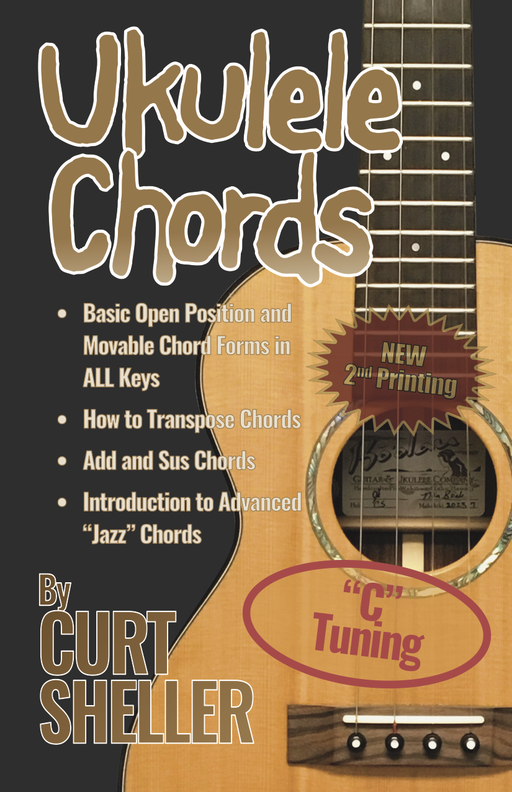
.jpg)